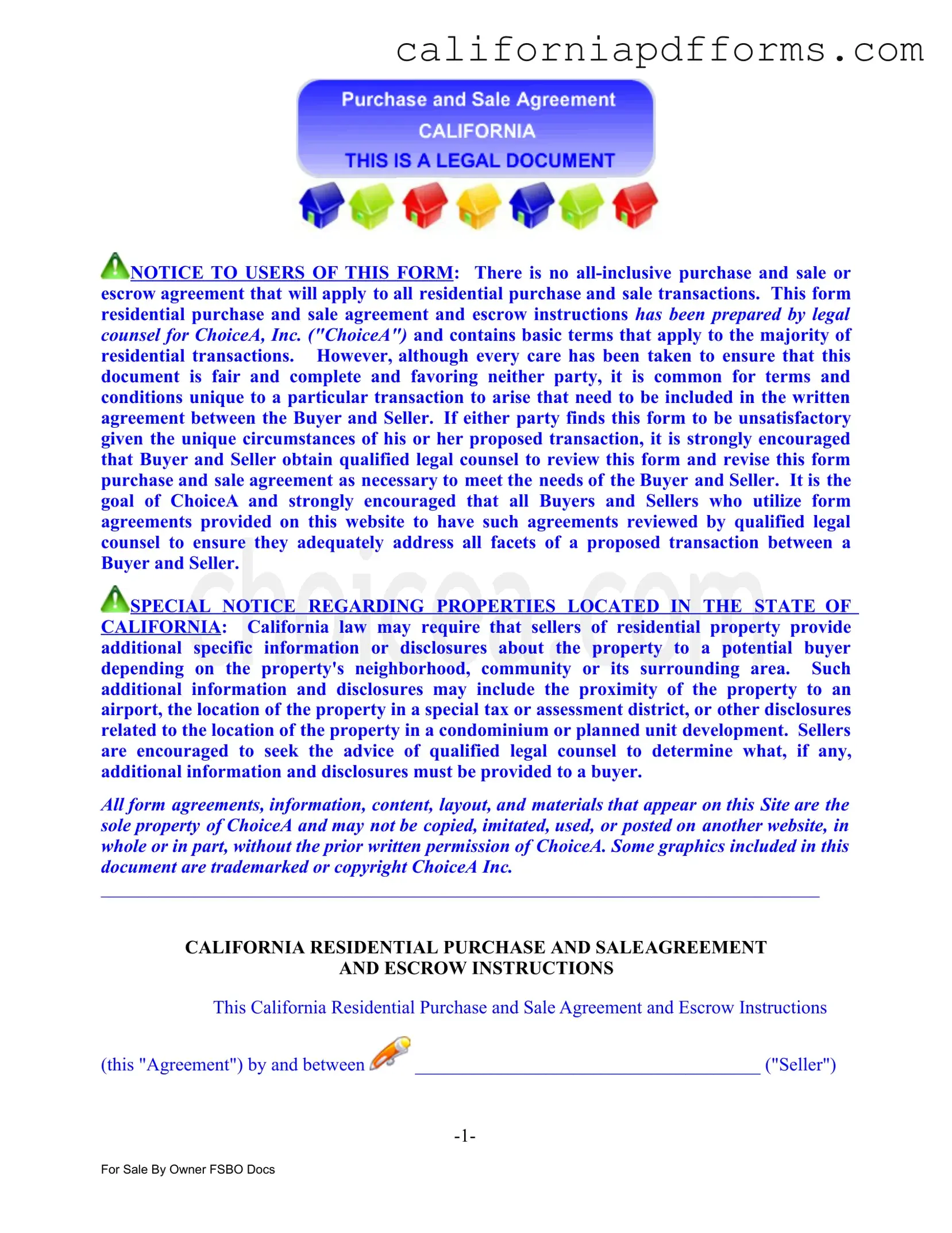The California Sale Agreement form serves as a legal document outlining the terms and conditions under which a buyer agrees to purchase a property from a seller. This form includes essential details such as the purchase price, payment terms, and contingencies that must be met for the sale to proceed. It helps ensure that both parties have a clear understanding of their obligations and rights throughout the transaction.
This form is intended for individuals or entities involved in the sale of residential property in California. Both buyers and sellers can utilize this agreement to formalize their transaction. However, it is important to note that unique circumstances may arise in specific transactions. In such cases, it is advisable for both parties to consult with qualified legal counsel to tailor the agreement to their needs.
What are contingencies, and why are they important?
Contingencies are conditions that must be met for the sale to proceed. They protect the interests of the buyer and seller by allowing either party to back out of the agreement without penalty if specific conditions are not satisfied. Common contingencies include:
-
Buyer's approval of property inspections.
-
Securing financing for the purchase.
-
Obtaining a satisfactory appraisal of the property.
Including contingencies in the Sale Agreement helps ensure that both parties are comfortable moving forward with the transaction.
What is the Earnest Money Deposit, and how does it work?
The Earnest Money Deposit is a sum of money that the buyer provides to show their commitment to purchasing the property. Typically, this deposit is made within three business days of signing the Sale Agreement. The amount is usually between one to two percent of the purchase price, but it cannot exceed five percent. This deposit is held in escrow until closing and is credited toward the purchase price. If the buyer backs out of the deal without a valid reason, the seller may keep the deposit as compensation for the time the property was off the market.
What should I do if I find discrepancies in the Title Report?
If you receive the Title Report and notice any discrepancies or exceptions that concern you, you must notify the seller in writing within 15 days. The seller then has 10 days to either resolve these issues or provide assurances regarding how they will be addressed. If the seller fails to do so, you may terminate the agreement and receive a refund of your Earnest Money Deposit.
How can I ensure that my Sale Agreement meets my specific needs?
What happens if I decide to terminate the Sale Agreement?
If you choose to terminate the Sale Agreement, the process will depend on the reason for termination. If it is due to unmet contingencies, such as not securing financing or being dissatisfied with the property inspection, you are entitled to a refund of your Earnest Money Deposit. However, if you terminate for reasons not covered by contingencies, you may risk losing your deposit. It is crucial to understand the terms of the agreement and consult with a legal professional if you are considering termination.
